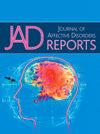青少年肥胖患者的抑郁患病率、筛查和治疗情况
Q3 Psychology
引用次数: 0
摘要
目的:本研究旨在描述美国门诊青少年抑郁症的患病率、筛查和治疗率。方法从2008-2018年CDC全国门诊医疗调查数据集中提取444,080,295名年龄在13-18岁的男女青少年的医生报告数据。使用CDC的SAS计算器计算身体质量指数(BMI)百分位数,然后根据他们的BMI百分位数将参与者分为体重组。统计检验采用t检验和卡方检验确定体重组与抑郁的相关性,采用回归分析确定抑郁的预测因素。结果16.89%的受试者BMI百分位数为肥胖,13.81%为超重,43.39%为健康,25.91%为体重不足。肥胖青少年抑郁筛查率为2.89%,超重为3.35%,健康体重为3.49%,体重不足为2.83% (p=0.382)。肥胖青少年抑郁患病率为7.17%,超重患病率为6.04%,健康体重患病率为6.31%,体重不足患病率为12.14% (p < 0.01;0.0001)。青少年肥胖患者的心理咨询患病率为2.70%,超重患者为2.89%,健康体重患者为2.92%,体重不足患者为11.27% (p < 0.01;0.0001)。初级保健卫生工作者所见的患者、年龄、女性、慢性病数量和就诊次数增加是青少年抑郁症诊断的重要预测因素。结论超重或肥胖青少年抑郁症的筛查、识别和治疗不足。必须为那些同时患有抑郁症和肥胖症的人提供更多的心理健康咨询和心理治疗。本文章由计算机程序翻译,如有差异,请以英文原文为准。

Depression prevalence, screening, and treatment rates in adolescents with obesity in ambulatory settings
Objective
This study aims to describe the prevalence, screening, and treatment rates for depression in adolescents in ambulatory settings in the United States.
Method
Physician-reported data on 444,080,295 male and female adolescents ages 13-18 were extracted from the 2008-2018 CDC National Ambulatory Medical Care Survey datasets. Body mass index (BMI) percentiles were calculated using the CDC’s SAS calculator, and particpants were then stratified into weight groups based on their BMI percentiles. Statistical testing included t-test and chi-square to determine association between weight groups and depression, and regression analysis was used to determine predictors of depression. Weighting factors were applied to improve comparability and reduce bias.
Results
16.89% of participants had obese BMI percentiles, and 13.81% had overweight, 43.39% had healthy, and 25.91% had underweight BMI percentiles. Depression screening rates in adolescents with obesity is 2.89%, overweight is 3.35%, healthy weight is 3.49%, and underweight is 2.83% (p=0.382). Prevalence of depression in adolescents with obesity is 7.17%, overweight is 6.04%, healthy weight is 6.31%, and underweight is 12.14% (p<0.0001). Prevalence of counseling and psychotherapy in adolescents with obesity is 2.70%, overweight is 2.89%, healthy weight is 2.92%, and underweight is 11.27% (p<0.0001). Patients seen by primary care health workers, age, female sex, number of chronic conditions, and increased visits are significant predictors of depression diagnosis in adolescents.
Conclusion
Depression in adolescents with overweight or obese status is under-screened for, under-identified, and under-treated. More mental health counseling and psychotherapy must be offered to those with both depression and obesity.
求助全文
通过发布文献求助,成功后即可免费获取论文全文。
去求助
来源期刊

Journal of Affective Disorders Reports
Psychology-Clinical Psychology
CiteScore
3.80
自引率
0.00%
发文量
137
审稿时长
134 days
 求助内容:
求助内容: 应助结果提醒方式:
应助结果提醒方式:


